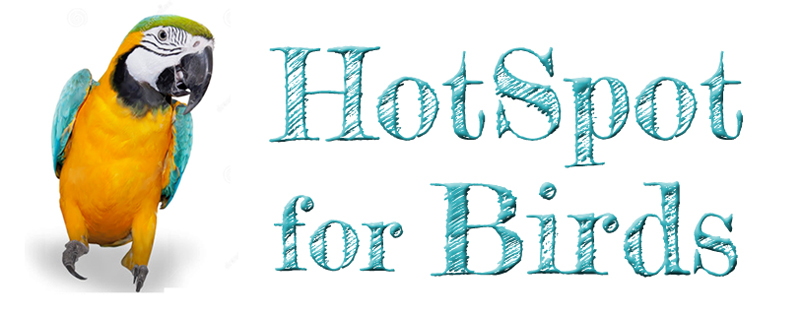in Pet and Breeding Birds
by Tiffany Margolin, DVM
Does your bird have a "cold"? Is his nose runny, is he sneezing, or having other signs of a respiratory infection? There are many causes of respiratory problems in birds, but one of the most stubborn and elusive culprits is Pseudomonas.
Recently, a green wing macaw named Jackpot was brought to our clinic because he had signs similar to those described above. A simple culture revealed that he had a sever Pseudomonas infection.
What exactly is Pseudomonas? It is pronounced "sudamonas", and is a water-loving organism. It is most often found in water sources such as hoses, taps and even water-filtering systems. It is a gram-negative rod-like organism that is not normally found in a healthy bird. If it gains a foothold, it readily proliferates in the warm, moist environment of a bird's respiratory system. Unfortunately for both the bird and its owner, Pseudomonas can be very resistant to many commonly used antibiotics.

Scanning electron micrograph of
pseudomonas aeruginosa bacteria
Pseudomonal infections, by and large, involve the respiratory system. Signs of the infection may include clear or yellowish discharge from one or both nostrils, sneezing, scratching at the nose and ears, and conjuctivitis (red eyes). If the problem is detected early enough, much subtler signs may be the only ones present. For example, the feathers around the nostrils may just be slightly crusty.
When an orange winged amazon named ET was brought in, its owner said that he was, "Sneezing a bit, and just not acting himself.) ET turned out to have a very resistant form of Pseudomonas. It could be treated only with injectable antibiotics. Although we have most commonly observed the infection in psittacines, it is not limited to that group. Most adult birds have immune systems strong enough to wall the infection off to the upper respiratory system. As an infection progresses and becomes more severe, signs can include swollen sinuses around the eyes and complete obstruction of the nostrils.
Juvenile psittacines are at greater risk if exposed to Pseudomonas, because of their immature immune systems. Instead of localizing the bacteria to the respiratory tract, their systems may be overwhelmed and become septicemic (Carrying the bacteria in the bloodstream to all of the organ systems). This danger is very real if the formula water is contaminated. This can be avoided if one is careful to boil the water before using it. Also be sure that all utensils are thoroughly cleaned and disinfected before each use.
Recently, a four week old cockatiel was afflicted. The bird became extremely ill and died within 24 hours. It was brought to our clinic for necropsy. The environmeent was investigated for months before finding the bacteria living in the filters that purified her aviary water! One must culture taps, surfaces, and other areas that the water may contact. Even if bottled water is used --the most likely spot to find a problem is inside the cap.
We have discussed treatment in the individual bird, but how does one address aviary contamination? Surface disinfectants must be employed here. Nolvasan does not kill Pseudomonas. For surface disinfection with bleach, use a dilution of one part bleach to thirty parts water and rinse thoroughly. Remove all bleach residue from cages and bowls before contact with birds is allowed. Roccal-D, Kennelsol and many other disinfectants also labeled for use against Pseudomonas. Follow manufacturer's instructions.
If the water lines are contaminated, they must be flushed with an appropriate disinfectant and recultured. Check water filtering devices on a regular basis. It is also recommended to run the tap for several seconds before filling bowls to reduce the overall bacterial count.
I cannot overstress the importance of having a known Pseudomonas bird rechecked and recultured on a regular basis. This bacteria has an extremely high rate of recurrence if this is not done. If often becomes stronger and more resistant with each subsequent generation. Consult your avian veterinarian if you suspect a problem with your aviary or pet bird.
|
Please Give Us a Link
If you found our site to be useful, please link our website to yours. We really appreciate any help we can get in making our avian health and safety articles readily available. |
Contact Information

|
||||||||||
|
